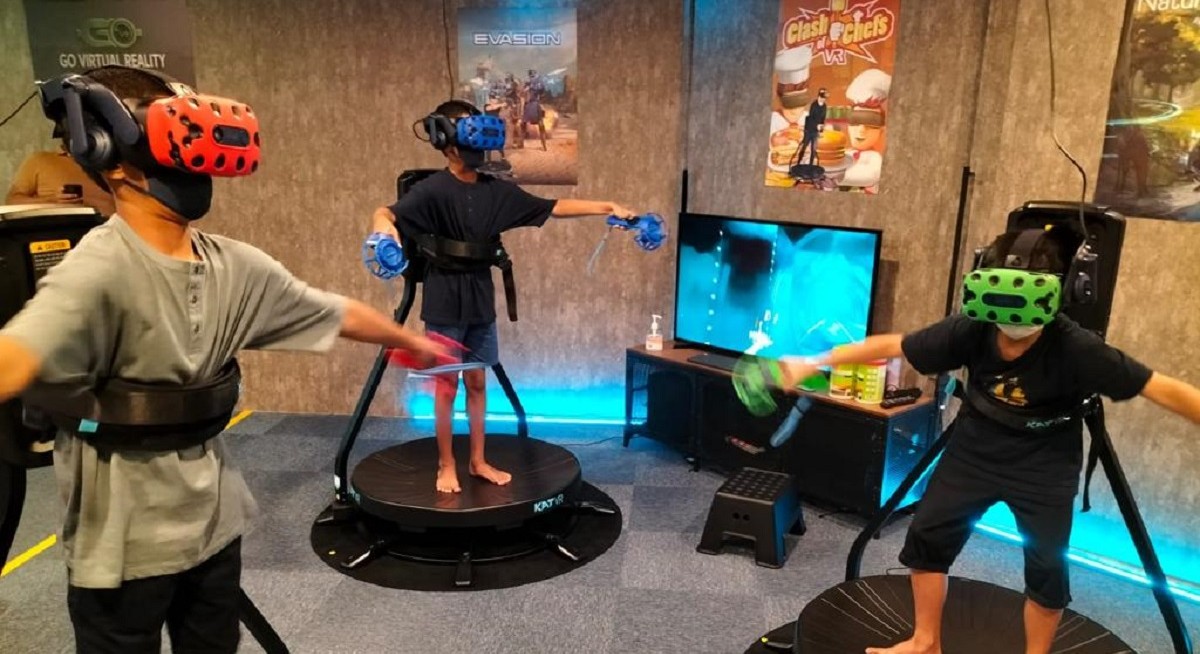Last month, my sons and I went to Chinatown to check them out. We were fitted with handsets made by Oculus. The headsets resembled the equipment that deep sea divers use. It had a wide-range goggle and a gadget linked to the hands.
With the Oculus headsets, we were catapulted to the metaverse. I assumed the identity of a space traveller surfing the moon.
The graphic interface was vivid and realistic. It replicated the moon’s gravitational pull. Neil Armstrong had to undergo months of training in 1969. My moon landing only required me to pop down to Chinatown.
The beginnings of metaverse
See also: OCBC stepping into the metaverse for next-gen customers
The metaverse foray was like my first experience with the world wide web in 1995. The embryo of the internet had been around since the 1970s. But it was only in the mid-1990s that it became common.
The first web encounter was addictive. The ease of moving from one colourful page to another was unique. The term “web surfing” was so apt. Every click was like riding a wave.
As with the internet in 1995, the roots of the metaverse have existed for a while. Oculus and VR games having been around for almost a decade. However, it may be about to go mainstream like the world wide web did in 1990s. Facebook has decided to brand itself as Meta Platforms.
See also: mm2 partners with The Sandbox to create content in the metaverse
The metaverse is a three-dimensional digital sphere. It is immersive and usable in real-time. Users may use it to shop, socialise and study.
Its uses go well beyond entertainment. Surgeons can prepare for operations with virtual patients. Students and teachers can collaborate with virtual avatars. Even dating could change. Virtual avatars could connect in the metaverse as a prelude for a real-world encounter.
There is a stampede for the metaverse. But investors should tread with caution, as the rise of the internet shows. The internet dominates our lives today. But, the early days were chaotic and uncertain.
The browsers such as Netscape were unreliable. Netscape and its competitors have long been forgotten. The search engines were ineffective in the pre-Google era. Logging on was slow and painful. Downloading a Bruce Springsteen song would take 25 minutes on a dial-up modem.
Not interoperable
Matthew Ball is the author of a new book titled The Metaverse. He is a venture-capital investor. He argues that the new buzzword faces challenges like its ancestor, the internet. The beauty of the internet in the early years was its interoperability. One could move seamlessly move from the Wall Street Journal website to a university network. A photo could be saved from one site and posted on another.
The metaverse is even more chaotic than the early internet. It is not interoperable yet. Unity and Unreal are two prominent gaming engines in the metaverse. The two are not compatible. For instance, an avatar in one engine cannot appear in the other. This is like an email from one network being unreadable in another.
Sink your teeth into in-depth insights from our contributors, and dive into financial and economic trends
The bandwidth and latency required for the metaverse is insufficient. Today’s download speeds enable Zoom and Netflix to flourish. However, it took a generation to get to this level. Accessing the metaverse requires a trip to an outlet in Chinatown. In the 1990s, surfing the web meant a trip to a cybercafe. The download speed is still too slow for mass home use.
Mass metaverse use is difficult, but investing in it is simple. Matthew Ball has devised an exchange traded fund called the Ball Metaverse Index. It consists of companies with a market cap of over US$1 billion ($1.44 billion) that have made the metaverse their focus. They include Apple, Meta, Unity Software and Nvidia.
It is the only metaverse fund with a yearlong track. The tech rout has not been kind to the theme. The Ball Metaverse Index is down 53% ytd, underperforming Nasdaq by 21%. But investors need to look at the long haul. Chinatown is a hub of a new field, 179 years after it was founded.
Nirgunan Tiruchelvam is head of consumer and internet at Alētheia Capital and author of Investing in the Covid Era. He does not hold any position in the stocks mentioned in this column




